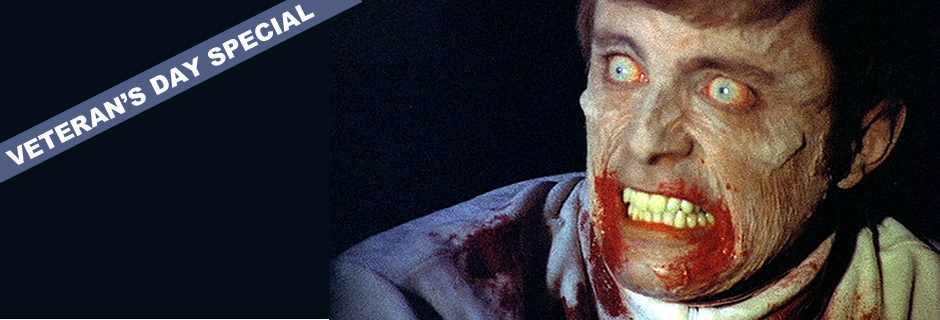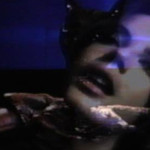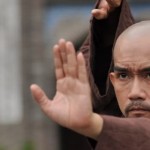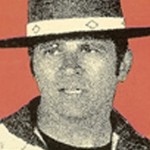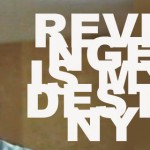NAM NAM NAM: THE WAR COMES HOME IN FLESH-EATING FORM
NAM NAM NAM:
THE WAR COMES HOME IN FLESH-EATING FORM
Caelum Vatnsdal
Leave it to the horror movie to begin processing a nation’s wounds, misfortunes and follies years before any other genre gets up the nerve. The distance horror offers, with its capacity for metaphor, its comforting aura of unreality, its far-out special effects, make it an ideal delivery system for both sharp critique and superficial analysis, with, potentially, some surprisingly good counsel cheap discount levitra tossed into the mix.
The 1970s and 80s was the heyday for such genre relevance. College professors like Wes Craven, or those who may as well have been college professors like David Cronenberg, were making films; other pictures came from sharp-minded individuals like George Romero and John Carpenter, who, if they hadn’t quite been peace-marching hippies in their younger days, had nevertheless been politicized by Vietnam and Watergate and all the other widening cracks in the online pharmacies uk selling levitra America-The-Beautiful illusion. After the Reds Under the Bed allegories of the 1950s, this post-Vietnam period might be thought of as the second wave of horror-as-philippic.
Bob Clark was another of this generation, and was just as convinced of the futility, insanity and heartbreaking consequences of Vietnam as any of his better-known contemporaries. Romero had been perhaps the first to bring the war home, albeit obliquely, with his zombie hordes in 1968’s Night of the Living Dead, and then again more directly in The Crazies a few years later, but it was Clark who first price check 50mg viagra identified the war as the ultimate villain in a zombie scenario. (His first film, Children Shouldn’t Play With Dead Things, was a zombie picture, though one without any discernable political subtext)
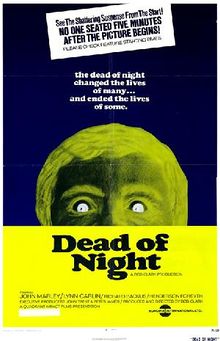 Clark’s second feature film Deathdream, produced as The Night Walk and also known as The Night Andy Came Home, tells the tale of a family who are informed of the death of their son, Andy, in some foreign theatre of war. They barely have time to process their devastation before Andy himself comes waltzing in the door; apparently the death notice was a mistake.
Clark’s second feature film Deathdream, produced as The Night Walk and also known as The Night Andy Came Home, tells the tale of a family who are informed of the death of their son, Andy, in some foreign theatre of war. They barely have time to process their devastation before Andy himself comes waltzing in the door; apparently the death notice was a mistake.
We soon realize that this was no clerical error: Andy had indeed been one of the 60,000 young Americans to die in Vietnam, but came home anyway, drawn by some combination of his mother’s fanatical need, his own sense of duty to family and community and the general order of things, and perhaps the inability to believe that he, formerly a perfect All-American lad, has met his end in such a dingy and pointless way. He’s like the Coyote, tricked off a cliff by the Road Runner but still hanging impossibly in the air, legs pumping, too levitra mit rezept 10 mg preise intent on the chase to notice the chasm beneath him.
And of course he’s done nobody any favours by returning, since he’s now a blood-drinking zomboid creature with crumbling skin and a bad attitude, fitting, in many ways and in particular after the My Lai massacre made the news in 1969, the public perception of the blood-soaked and damaged veteran. The Boys were not coming back in the same shape as when they’d left: they were now dead-eyed and uncommunicative, and they’d brought with them horrifying images of atrocities and body parts. If Rambo and other such movies are to be believed, there was a good deal of bitterness and resentment on the part of the disillusioned vets themselves, and Andy embodies this too. “I died for you,” he petulantly tells one of his victims (exhibiting something of a Christ complex in the bargain!), “now why shouldn’t you return the favor?”
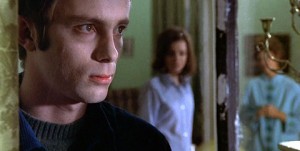 So Vietnam made it onto movie screens, obliquely but not inaccurately, long before Christopher Walken had his game of Russian Roulette in The Deer Hunter or Charlie Sheen waxed philosophical about the duality of man in Platoon. The effort went largely unappreciated at the time, but did not escape politically perceptive critics such as the late Robin Wood. A much later re-release garnered praise as well, coming as it did on the eve of another ill-advised war. “Clark’s metaphoric nerve is as astonishing as his filmmaking is crude,” said the Village Voice’s Michael Atkinson in late 2002, “and there may not be a more quietly galling movie about the war’s psychosocial devastation.”
So Vietnam made it onto movie screens, obliquely but not inaccurately, long before Christopher Walken had his game of Russian Roulette in The Deer Hunter or Charlie Sheen waxed philosophical about the duality of man in Platoon. The effort went largely unappreciated at the time, but did not escape politically perceptive critics such as the late Robin Wood. A much later re-release garnered praise as well, coming as it did on the eve of another ill-advised war. “Clark’s metaphoric nerve is as astonishing as his filmmaking is crude,” said the Village Voice’s Michael Atkinson in late 2002, “and there may not be a more quietly galling movie about the war’s psychosocial devastation.”
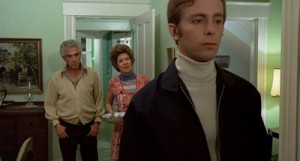 Clark did not keep his movie’s subtext a secret, explicitly calling it “a metaphor for the horrors of the Vietnam War.” Nor could it have been terribly obscure to the film’s neophyte assistant makeup man, Tom Savini, who’d been a combat photographer in Vietnam and had come back from southeast Asia with a head full of grisly imagery and a need to expunge it through his craft. In examining the connections between horror movies and the war in Vietnam, it’s clear that Savini’s realistic gore in films like Dawn of the Dead, Friday the 13th, Maniac and The Prowler is one of the strongest, or at least the most wide-ranging of such connections, and perhaps the least acknowledged. “Vietnam was a lesson in anatomy for me,” Savini told an interviewer. “When I create makeup effects, the fake stuff, if it doesn’t give me the same feeling I got when I saw the real stuff, then the fake stuff isn’t real enough for me.”
Clark did not keep his movie’s subtext a secret, explicitly calling it “a metaphor for the horrors of the Vietnam War.” Nor could it have been terribly obscure to the film’s neophyte assistant makeup man, Tom Savini, who’d been a combat photographer in Vietnam and had come back from southeast Asia with a head full of grisly imagery and a need to expunge it through his craft. In examining the connections between horror movies and the war in Vietnam, it’s clear that Savini’s realistic gore in films like Dawn of the Dead, Friday the 13th, Maniac and The Prowler is one of the strongest, or at least the most wide-ranging of such connections, and perhaps the least acknowledged. “Vietnam was a lesson in anatomy for me,” Savini told an interviewer. “When I create makeup effects, the fake stuff, if it doesn’t give me the same feeling I got when I saw the real stuff, then the fake stuff isn’t real enough for me.”
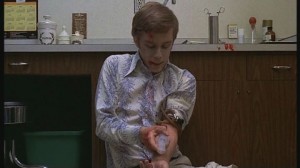 Deathdream was not the only horror film to use the Vietnam War in some way or another. Amid all the action dramas about returning vets and the difficulties they faced on the home front came films like Cannibal Apocalypse, in which a squad of veterans spread the flesh-eating plague they’d caught in ‘Nam all over the streets of Atlanta. Movies as diverse as Joy Houck Jr.’s Creature From Black Lake, featuring Dennis Fimple as the combat-damaged Pahoo, Steve Miner’s House, with fragged ghost Richard Moll seeking vengeance, Tobe Hooper’s Texas Chainsaw Massacre 2 and Adrian Lyne’s Jacob’s Ladder employed disturbed veteran characters or wartime imagery to their own satiric, horrific or dramatic ends. More recently came the well-regarded Korean horror effort R-Point, unique in being a Vietnam horror that actually took place in Vietnam during the war.
Deathdream was not the only horror film to use the Vietnam War in some way or another. Amid all the action dramas about returning vets and the difficulties they faced on the home front came films like Cannibal Apocalypse, in which a squad of veterans spread the flesh-eating plague they’d caught in ‘Nam all over the streets of Atlanta. Movies as diverse as Joy Houck Jr.’s Creature From Black Lake, featuring Dennis Fimple as the combat-damaged Pahoo, Steve Miner’s House, with fragged ghost Richard Moll seeking vengeance, Tobe Hooper’s Texas Chainsaw Massacre 2 and Adrian Lyne’s Jacob’s Ladder employed disturbed veteran characters or wartime imagery to their own satiric, horrific or dramatic ends. More recently came the well-regarded Korean horror effort R-Point, unique in being a Vietnam horror that actually took place in Vietnam during the war.
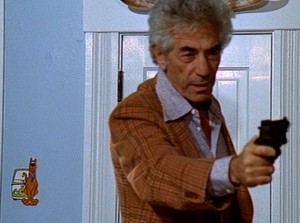 But Deathdream remains the best and most rigorously worked out use of the Asian conflict in a horror film either directly or metaphorically; the more so because of Clark and screenwriter/makeup man Alan Ormsby’s desire to tell a family story first and a political one second. In the closing moments of the movie, as Andy, rejected by his father and chased by police, is driven by his mother to the grave he has prepared for himself, we may choose to contemplate the complete ruination the war has visited on this and tens of thousands of other American families along with the blood-soaked horror of the ur-text itself. (The devastation suffered by the Vietnamese themselves is another thing again, of course, and much more difficult, if not impossible, to deal with in a fictitious context.) Rising above its low budget and technical crudities, Deathdream reminds us of how gloriously reflective, relevant and profound the horror genre can be in its finest moments.
But Deathdream remains the best and most rigorously worked out use of the Asian conflict in a horror film either directly or metaphorically; the more so because of Clark and screenwriter/makeup man Alan Ormsby’s desire to tell a family story first and a political one second. In the closing moments of the movie, as Andy, rejected by his father and chased by police, is driven by his mother to the grave he has prepared for himself, we may choose to contemplate the complete ruination the war has visited on this and tens of thousands of other American families along with the blood-soaked horror of the ur-text itself. (The devastation suffered by the Vietnamese themselves is another thing again, of course, and much more difficult, if not impossible, to deal with in a fictitious context.) Rising above its low budget and technical crudities, Deathdream reminds us of how gloriously reflective, relevant and profound the horror genre can be in its finest moments.

 November 1, 2011
November 1, 2011  No Comments
No Comments
